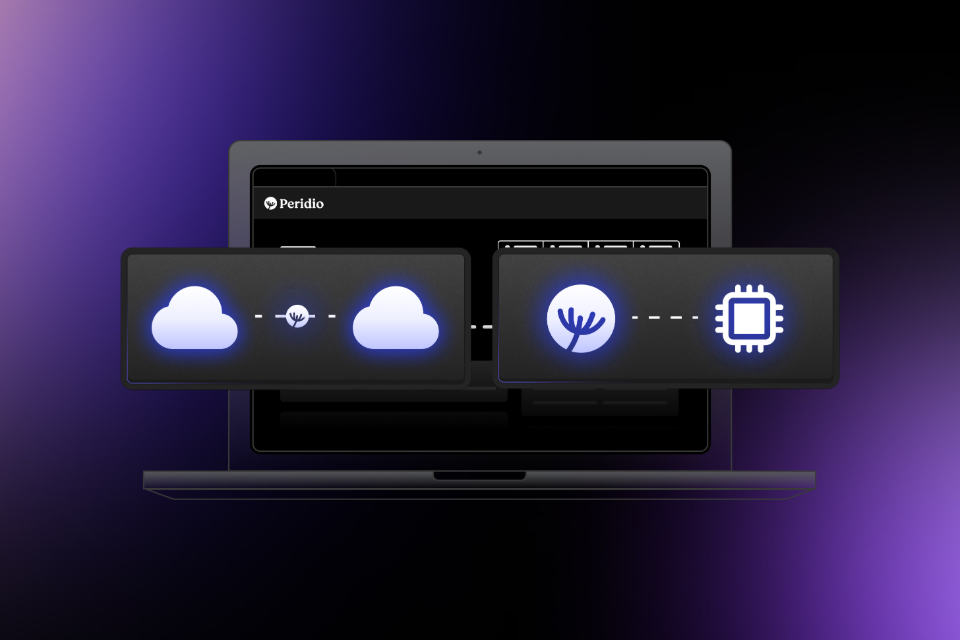Moving Beyond Manual Workflows
Discover how manual software distribution to edge devices creates hidden operational costs and technical debt. Learn how declarative systems and purpose-built platforms like Peridio enable repeatable, secure firmware deployments that free engineering resources for innovation.
As embedded systems become increasingly sophisticated, the complexity of software distribution to edge environments has grown exponentially. Organizations deploying mission-critical infrastructure—from telecommunications equipment to energy management systems—face unprecedented challenges in maintaining software integrity, security, and operational efficiency.
The Unseen Complexity of Edge Software Distribution
Many engineering teams still rely on ad hoc processes for managing firmware distribution. These approaches typically involve:
- Git-based targeting using branches and tags as makeshift release management tools
- Spreadsheet-driven workflows tracking device configurations and software versions
- Manual handoffs between development, QA, and operations teams
- Custom scripts for deployment that lack proper documentation and maintainability
The consequence? Engineering bandwidth consumed by repetitive deployment tasks rather than innovation, while introducing potential points of failure throughout the distribution pipeline.
From Manual to Managed: The Power of Declarative Systems

Embedded system deployments demand more than just reliable delivery mechanisms—they require complete systems for artifact management, verification, and structured deployment. A declarative approach to software distribution offers several advantages:
- Unambiguous system specifications that eliminate confusion between engineering and program management
- Reproducible builds that ensure consistent outcomes across environments
- Version-controlled deployment manifests documenting precisely what software runs where
- Defined promotion workflows that maintain quality gates between environments
By establishing these declarative systems, engineering teams free themselves from the burden of constantly explaining and justifying their processes. Instead, they create repeatable patterns that streamline operations and reduce cognitive load.
Operational Efficiency: Moving Beyond Engineer-Dependent Workflows
One of the most overlooked costs in edge software distribution is the continuous reliance on specialized engineering talent for routine operations. When deployment processes exist primarily as tribal knowledge or are locked in Git-based workflows only engineers understand, several problems emerge:
- Release management becomes a bottleneck dependent on specific engineers
- Program managers lack visibility into deployment status and timelines
- QA teams struggle to understand exactly what they're testing and when
- Cross-functional collaboration suffers from information asymmetry
Purpose-built tooling shifts these dynamics by empowering non-technical stakeholders to direct workflows, while engineers focus on creating value through new features and capabilities.
Composable Architectures: The Foundation for Scalable Edge Systems
As heterogeneous computing becomes the norm at the edge—with specialized processors for AI, security, and real-time operations—software distribution must accommodate multi-architecture deployments. Composable systems enable:
- Component-level updates allowing independent development teams to work asynchronously
- Delta updates reducing bandwidth requirements for over-the-air deployments
- Layered security models with cryptographic verification at each level of the stack
- Environment-specific configurations without rebuilding core components
This approach creates cleaner boundaries between system components, simplifying testing and reducing the risk associated with updates to production environments.
Breaking Free from the DIY Cycle
Many organizations begin with in-house tooling for edge software distribution, only to discover the hidden maintenance burden as their device fleets scale. A purpose-built platform like Peridio offers:
- Reproducibility: Automated builds ensuring deterministic outputs for every release
- Observability: Comprehensive visibility into device status and software versions
- Certification: Streamlined processes for validating software against compliance requirements
- Role-based workflows: Enabling program managers and QA teams to drive processes without engineering dependencies
By addressing these fundamental challenges, engineering teams reclaim valuable time for innovation rather than managing complex distribution pipelines.
Conclusion: Transforming Distribution from Liability to Asset
Software distribution to edge environments can be either a strategic advantage or a persistent source of technical debt. Organizations that recognize the operational implications of their distribution strategies position themselves for faster innovation cycles and more reliable deployments.
The shift from manual, engineer-dependent processes to structured, declarative systems doesn't just reduce risk—it fundamentally changes how teams collaborate, removing friction and creating clearer paths to production for new capabilities.
For teams looking to break free from spreadsheet-driven release management and Git-based targeting, platforms like Peridio provide the foundation for scalable, secure software distribution that aligns engineering practices with business objectives in edge-computing environments. Let's talk!